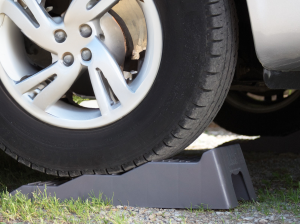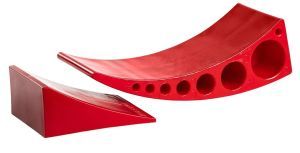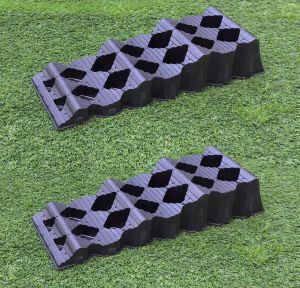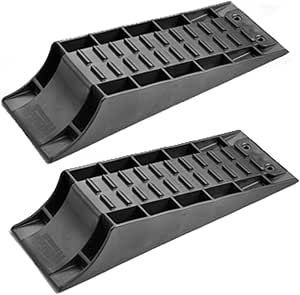
How to Use Motorhome Levelling Blocks Safely – And Choosing the Right Type
Levelling your (Roller Team) motorhome is one of the first and most important steps when setting up at a campsite. Not only does it ensure a comfortable night's sleep and proper operation of appliances like fridges, but it also helps prevent unnecessary strain on your vehicle and its structure. Using levelling blocks correctly – and choosing the right type – is essential.
In this article, we’ll explore how to use levelling blocks safely and the differences between curved wedge, stepped wedge, and traditional wedge types. We’ll also share the pros and cons of each to help you decide what’s best for your setup.
Why Level Your Motorhome?
Before diving into the types of levelling blocks, it’s worth understanding why levelling is so important:
Sleeping or moving around in a sloped motorhome is uncomfortable.
Fridges, in particular, need to be level to function properly.
Sinks and showers drain more efficiently when level.
Parking unevenly can put strain on your frame and doors.
General Safety Tips for Using Levelling Blocks
Before getting into the specific types, always follow these steps for safe and effective use of levelling blocks:
If a pitch is heavily sloped, consider repositioning rather than stacking blocks too high.
Types of Levelling Blocks

These feature a curved shape that allows your tyre to roll smoothly upwards. Often used with a wheel chock to hold the tyre in place once level.
How to Use:
-
Place the leveller in front of or behind the wheel, depending on the direction of travel.
-
Slowly drive onto the ramp until your motorhome is level.
-
Insert the chock to lock the wheel in place.
Pros:
-
Offers continuous adjustment – you can stop exactly at the level you want.
-
Smooth and easy to drive onto.
-
Ideal for minor to moderate adjustments.
Cons:
-
Less effective for very steep slopes.
-
Can be more expensive.
-
Not suitable for dual-wheel axles without wider versions.

These blocks have a “stair-step” design, usually with two or three levels of height. You simply drive up to the desired step.
How to Use:
-
Place the blocks in front of the tyres you need to lift.
-
Drive onto the step level that provides a flat orientation.
-
Stop once the van feels level and apply the brake.
-
Use chocks on the opposite wheels for extra safety.
Pros:
-
Simple and quick to use.
-
Great for mild to moderate levelling.
-
Very stable and secure when in place.
Cons:
-
Limited to the specific heights of each step.
-
May require repositioning if you overshoot a level.
-
Bumpier ride driving on/off due to the step edges.

These are the most basic type – a simple wedge or inclined ramp, often solid or hollow plastic.
How to Use:
-
Place in front of the wheel and drive slowly up.
-
Stop once you reach the desired height.
-
Use a spirit level (or app) to check flatness.
-
Apply the handbrake and use a wheel chock.
Pros:
-
Affordable and widely available.
-
Lightweight and compact for storage.
-
Durable when used properly.
Cons:
-
an slip more easily if not placed correctly.
-
No fine adjustment – often a single incline.
-
Not ideal for use on very soft or uneven ground without extra support.
Tips for Choosing the Right Type
-
For ease and precision: Go with curved wedge levellers.
-
For simplicity and speed: Stepped wedges are a great choice.
-
For budget-conscious or occasional users: Standard wedges do the job.
Also consider:
-
Weight capacity – Make sure the blocks can handle the load of your motorhome.
-
Width – Wide blocks are better for wider tyres or dual axle setups.
-
Material – UV-resistant plastic is common; rubber bases help grip.
Final Thoughts
Choosing the right levelling blocks can make a big difference to your camping comfort and motorhome safety. Whether you're parked on a mild incline or a slopey field, using them correctly ensures everything from your sleep to your fridge works just as it should.
If you’re still unsure which type suits your Roller Team motorhome the best, check what your fellow Roller Team owners use or ask in your favourite Facebook group – chances are, someone has tried them all!

